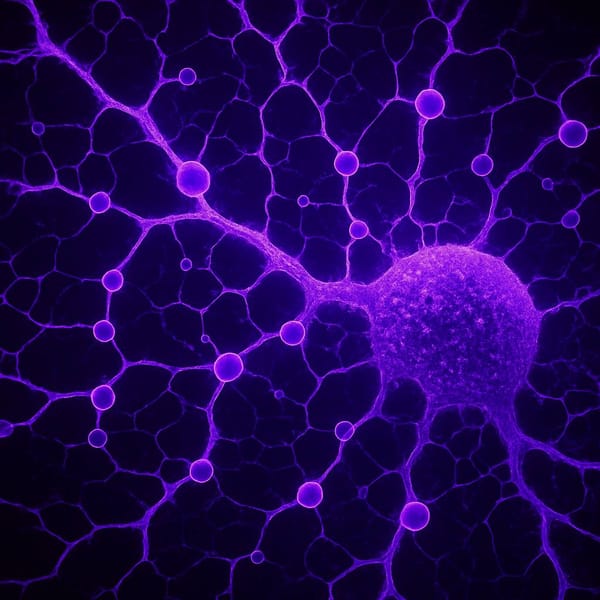Why Mental Illness Isn’t the Answer

A Systemic, Somatic, and Cultural Reframing of Violence in a Traumatized Civilization
I. Introduction: The Comfort of Distance
When society encounters atrocity—mass shootings, serial killings, or acts of brutal violence—it often turns to a familiar refrain:
“They must have been mentally ill.”
This response is not just stigma. It performs a deeper social function: it creates distance. By categorizing violent individuals as pathological aberrations, we remove them from our moral and cultural ecosystem. We isolate them as defects, shielding ourselves from the unsettling truth:
That violence is not an alien virus. It is a systemic signal.
It echoes through nervous systems, familial lineages, collapsed rituals, and failed institutions.
This essay does not excuse violence. It insists on reading it differently. Not reductively. Not reactively. But relationally—through the lens of neurobiology, trauma, and social field dynamics.
II. What Is “Mental Illness,” Really?
The Diagnostic and Statistical Manual of Mental Disorders (DSM), often considered the gold standard for psychiatric classification, is neither universal nor biologically grounded.
- James Deacon (2013) and Nassir Ghaemi (2010) further assert that psychiatric diagnoses function more as socially constructed labels than objective scientific categories.
Thomas Insel, former Director of the National Institute of Mental Health (NIMH), critiqued the DSM bluntly:
“The weakness is its lack of validity.” (Insel, 2013)
Psychiatric diagnoses are based on symptom clusters that disrupt what society deems “functional.” And what does “functional” mean?
Compliance. Productivity. Predictability.
In this light, the DSM becomes not a diagnostic truth tool—but a bureaucratic instrument for re-integrating deviant behavior back into systems of economic and social normativity.
III. Trauma Is Not a Glitch — It’s a Language
If psychiatry flattens complexity, trauma theory restores it.
- Bessel van der Kolk (2014) in The Body Keeps the Score reveals how trauma imprints somatically, distorting memory, physiology, and behavior.
- Stephen Porges (2011), through Polyvagal Theory, explains how the nervous system navigates safety and threat via three modes:
- Ventral Vagal – safety, connection, regulation
- Sympathetic – fight/flight
- Dorsal Vagal – freeze, shutdown, collapse
When a person commits violence, it may not stem from “evil” or even volition. It may be the expression of a nervous system stuck in a chronic survival state.
Violence, then, becomes a somatic rupture—not simply a “choice,” but a signal that regulation has failed.
Time in trauma is non-linear. A body trapped in freeze or rage may act as if history is still happening—now.
IV. Violence as Field Rupture
Rather than locating violence in the individual alone, we must learn to read it systemically—as a field rupture.
- Urie Bronfenbrenner’s Ecological Systems Theory (1979) offers a layered view of social embeddedness—from family to culture to global systems.
- Judith Herman (1992) and Peter Levine (1997) show that trauma is never isolated; it is relational, rhythmic, and intergenerational.
A violent act is not just a psychological failure.
It is:
- a nervous system failure,
- a familial transmission failure,
- a social ritual failure,
- and a field-wide collapse of attunement and containment.
If a child grows up with no safe adult, no coherent cultural story, and no ritual for rage—where do those emotions go? They either implode (depression, addiction, collapse) or explode (violence, domination, projection).
V. The Cultural Convenience of Diagnosis
Saying “he was mentally ill” does more than stigmatize. It:
- absolves society of responsibility,
- isolates the problem within a broken individual,
- and masks structural dysfunction as psychiatric disorder.
We use diagnosis as containment. Not for care—but for comfort.
The criminal becomes the scapegoat. Psychiatry becomes the high priest. And society avoids looking at itself.
VI. Crime as Nervous System Communication
If we want a real forensic method, we need a polyvagal criminology—one that asks:
- What happened to this nervous system?
- Where did it stop feeling safe?
- What rituals were missing?
- What parts of the field (family, school, culture) failed to mirror or metabolize that pain?
This is not sentimentality. It is field precision.
VII. Why My Method Is Different
I do not approach crime through pathology. I approach it through:
- Somatics
- Systems Theory
- Mythology
- Quantum Neuroscience
- Autoethnography
- Field perception
I track my own Heart Rate Variability (HRV) because I know:
My nervous system is the first lens of perception.
If I want to listen to the field—where violence emerged—I must be regulated enough to hear it without fear or projection.
VIII. Final Word: Not Excusing—Witnessing
This is not forgiveness. It is field repair.
Mental illness is often a euphemism for collective blindness.
True understanding is not diagnostic. It is ritual, relational, and nervous-system deep.
When we listen to the rupture instead of exiling it, we begin to break the cycle—not through punishment, but through precision.
References (APA 7th)
- Deacon, B. J. (2013). The biomedical model of mental disorder: A critical analysis of its validity, utility, and effects on psychotherapy research. Clinical Psychology Review, 33(7), 846–861.
- Frances, A. (2013). Saving Normal: An Insider’s Revolt against Out-of-Control Psychiatric Diagnosis, DSM-5, Big Pharma, and the Medicalization of Ordinary Life. HarperCollins.
- Ghaemi, N. (2010). The Rise and Fall of the Biopsychosocial Model. Johns Hopkins University Press.
- Herman, J. (1992). Trauma and Recovery: The Aftermath of Violence—from Domestic Abuse to Political Terror. Basic Books.
- Kolacz, J., & Porges, S. W. (2018). Chronic diffuse pain and functional gastrointestinal disorders after trauma: Pathophysiology through a Polyvagal perspective. Frontiers in Medicine, 5, 145.
- Levine, P. A. (1997). Waking the Tiger: Healing Trauma. North Atlantic Books.
- Porges, S. W. (2011). The Polyvagal Theory: Neurophysiological Foundations of Emotions, Attachment, Communication, Self-regulation. Norton.
- Siegel, D. J. (2012). The Developing Mind: How Relationships and the Brain Interact to Shape Who We Are. Guilford Press.
- van der Kolk, B. A. (2014). The Body Keeps the Score: Brain, Mind, and Body in the Healing of Trauma. Penguin Books.




